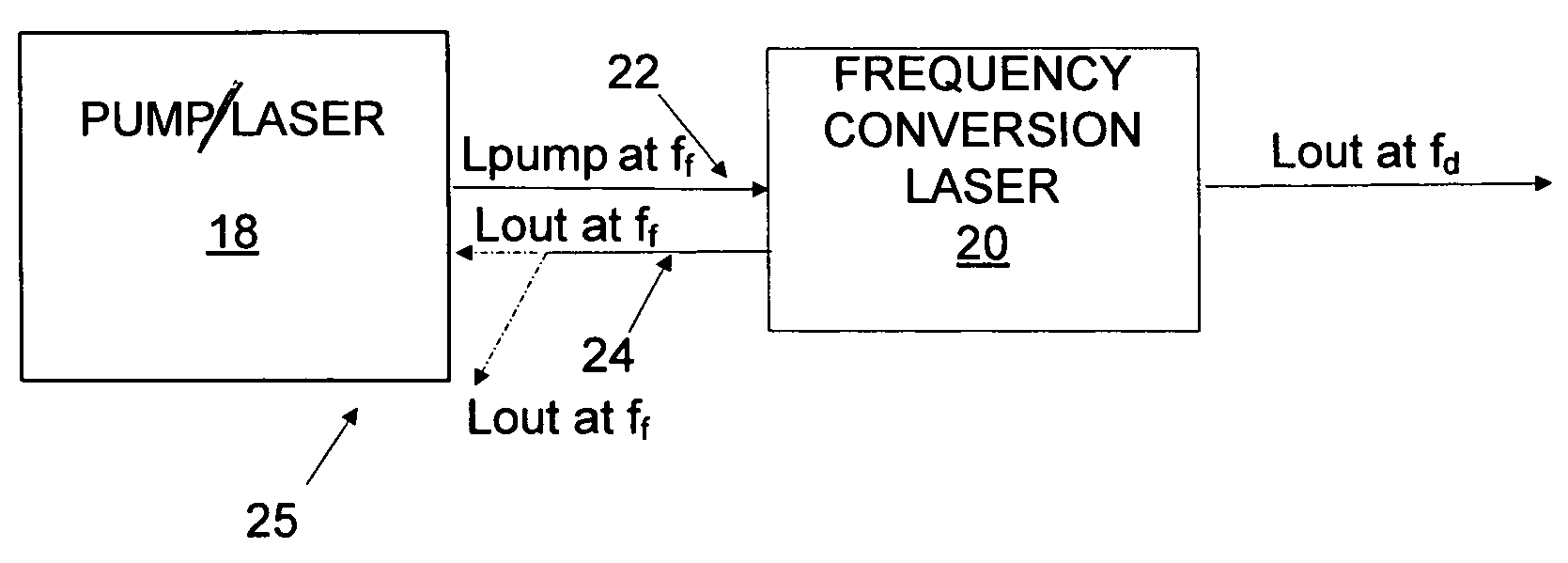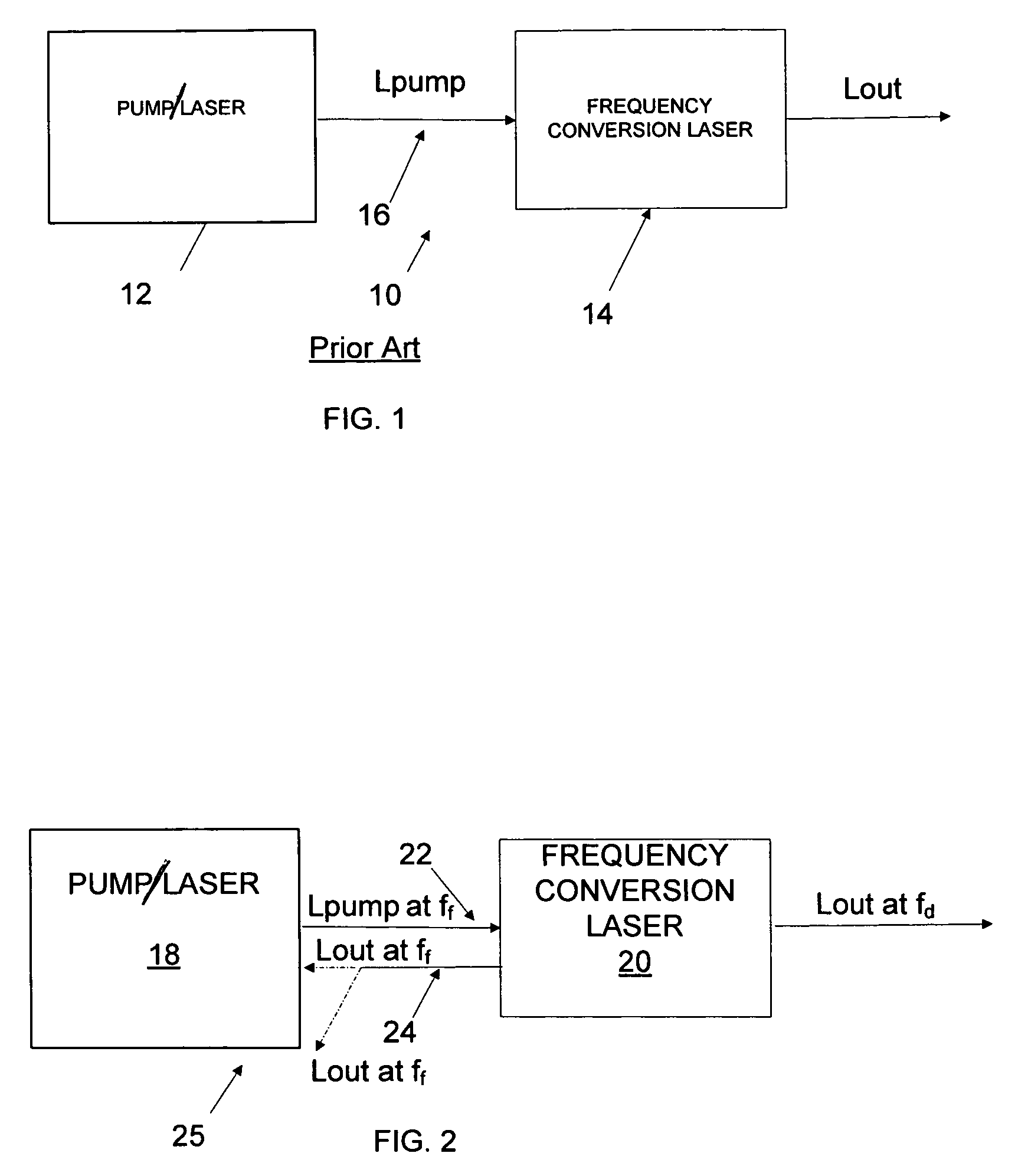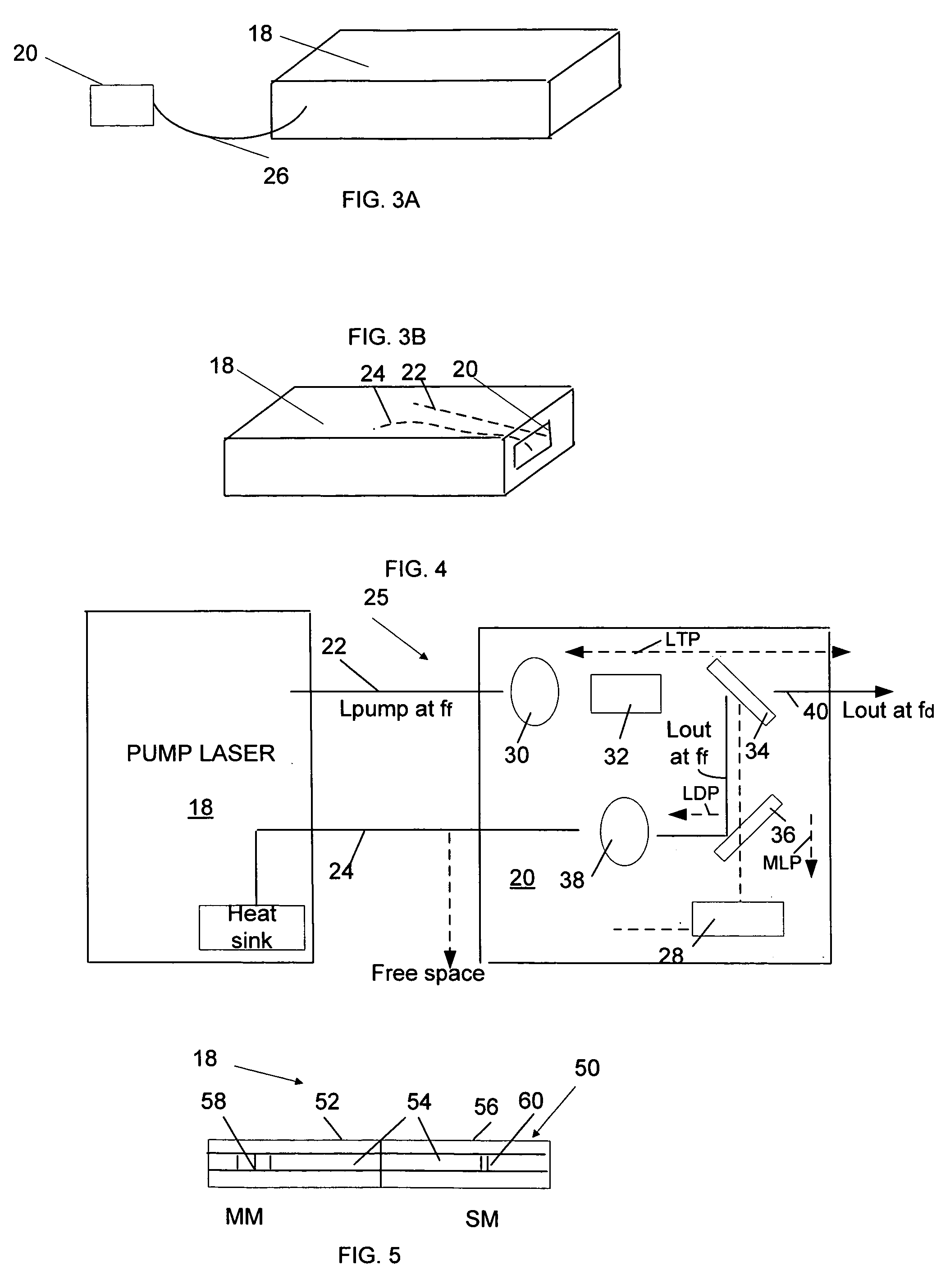Frequency conversion laser head
- Summary
- Abstract
- Description
- Claims
- Application Information
AI Technical Summary
Benefits of technology
Problems solved by technology
Method used
Image
Examples
Example
[0019]Reference will now be made in detail to the disclosed system. Wherever possible, same or similar reference numerals are used in the drawings and the description to refer to the same or like parts or steps. The drawings are in simplified form and are far from precise scale. For purposes of convenience and clarity only, the terms “connect,”“couple,” and similar terms with their inflectional morphemes do not necessarily denote direct and immediate connections, but also include connections through mediate elements or devices.
[0020]FIG. 2 illustrates a diagrammatic view of the disclosed laser assembly 25 including a laser system or pump laser module 18 and a frequency conversion laser head 20. An input component 22 couples a pump light beam Lpump at a fundamental frequency ff to frequency conversion laser head 20, which is operative to shift the fundamental frequency ff of pump light Lpump to a desired frequency fd. The light Lpump is processed inside the case of laser head 20 so t...
PUM
 Login to View More
Login to View More Abstract
Description
Claims
Application Information
 Login to View More
Login to View More - R&D
- Intellectual Property
- Life Sciences
- Materials
- Tech Scout
- Unparalleled Data Quality
- Higher Quality Content
- 60% Fewer Hallucinations
Browse by: Latest US Patents, China's latest patents, Technical Efficacy Thesaurus, Application Domain, Technology Topic, Popular Technical Reports.
© 2025 PatSnap. All rights reserved.Legal|Privacy policy|Modern Slavery Act Transparency Statement|Sitemap|About US| Contact US: help@patsnap.com



